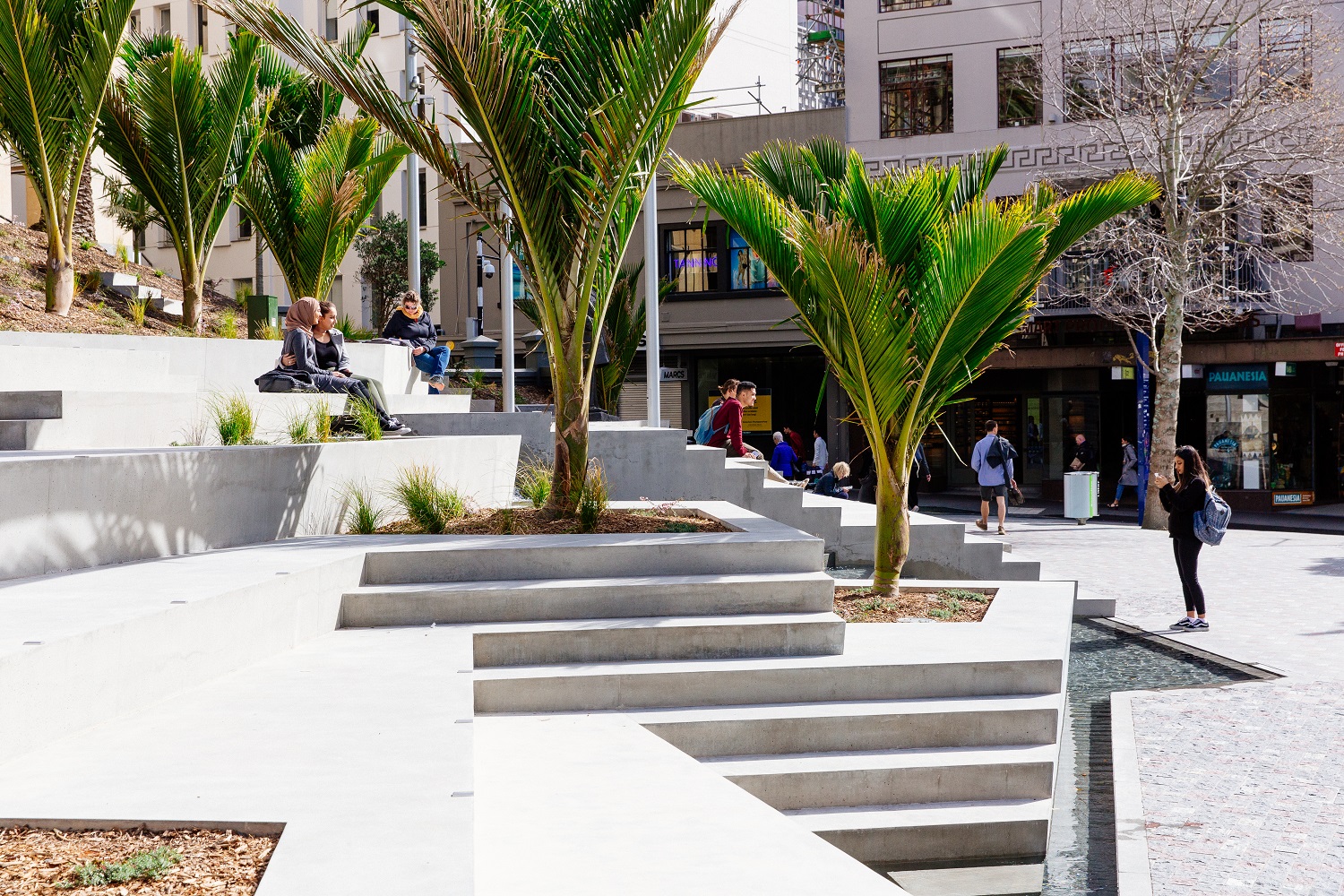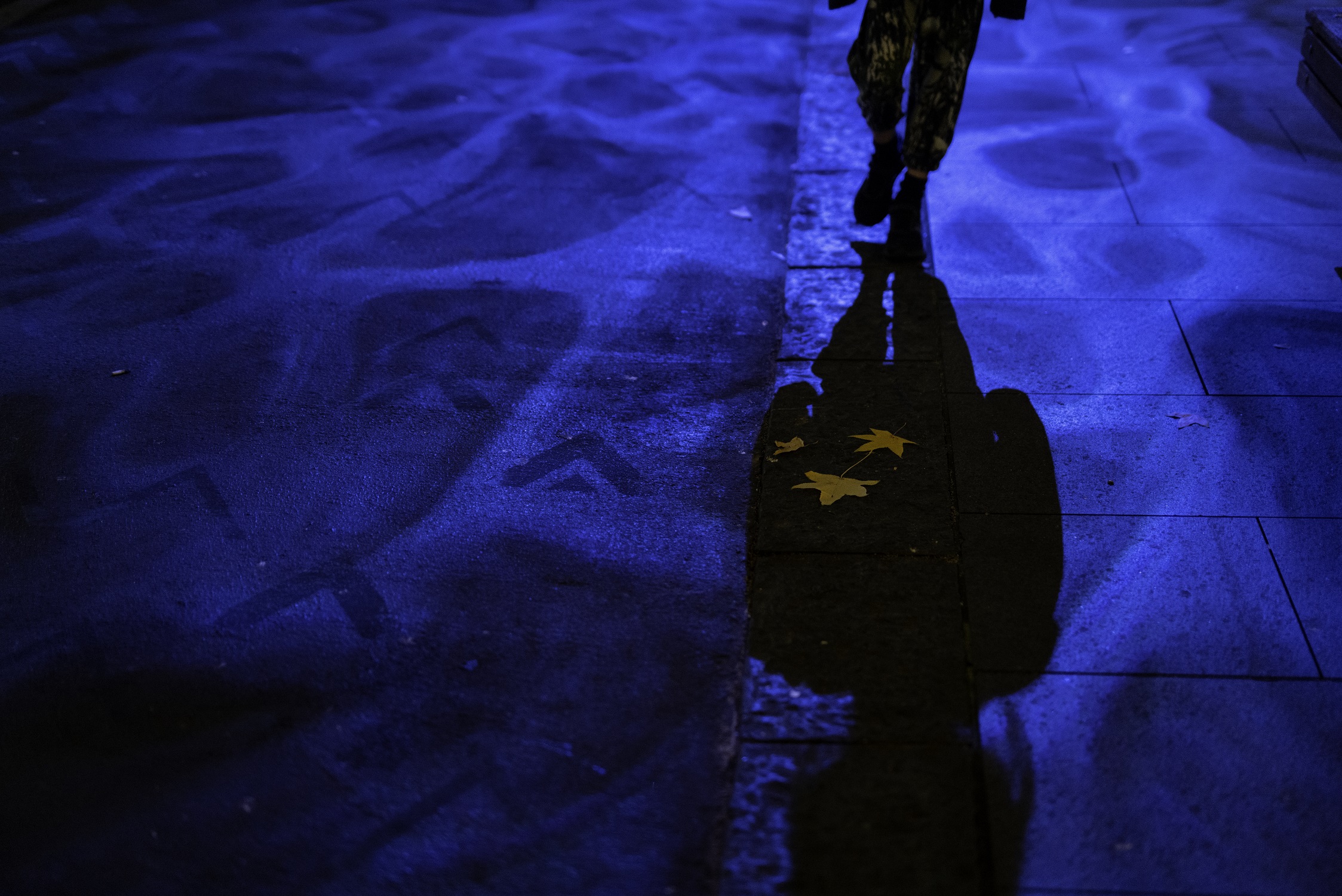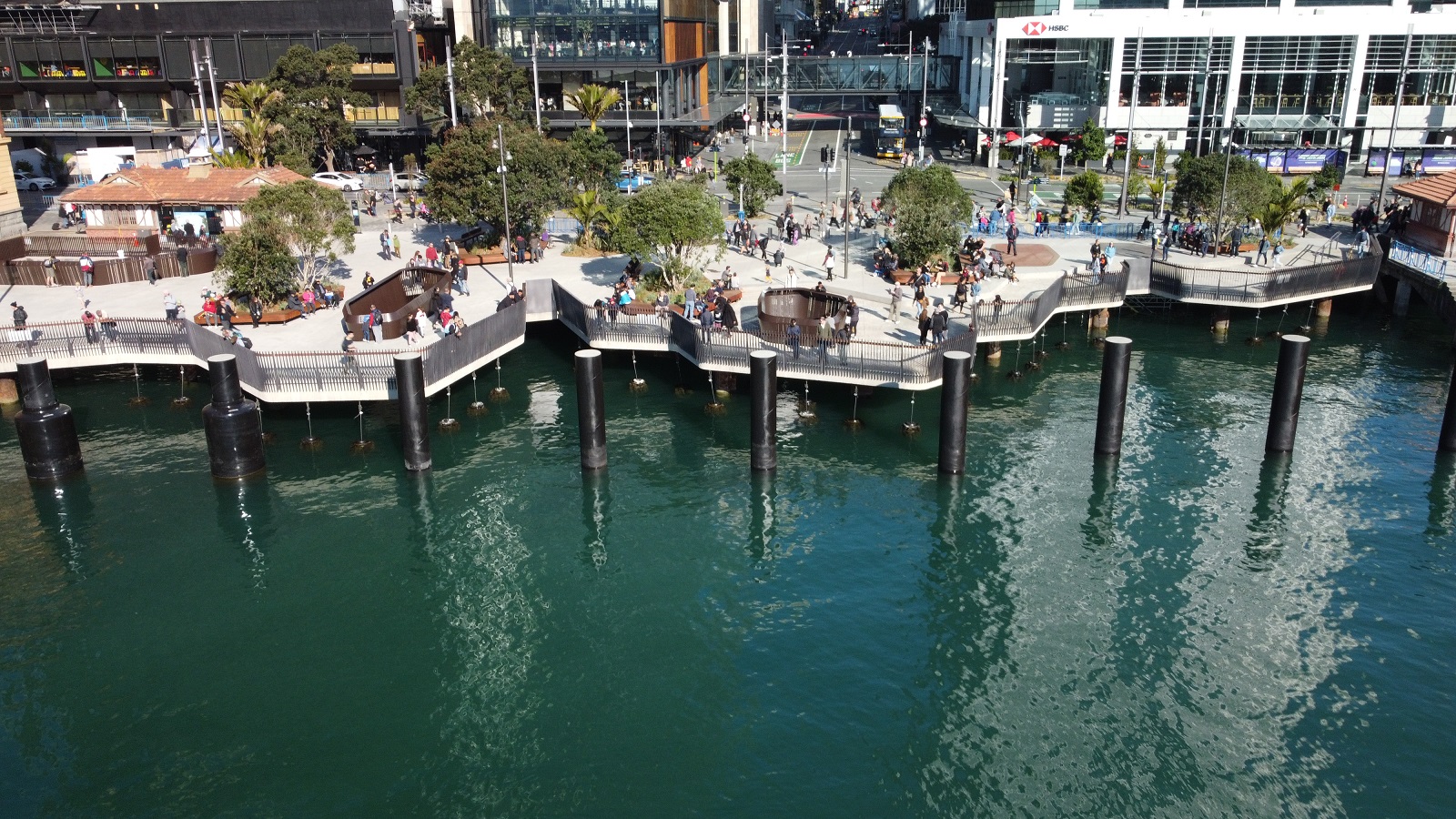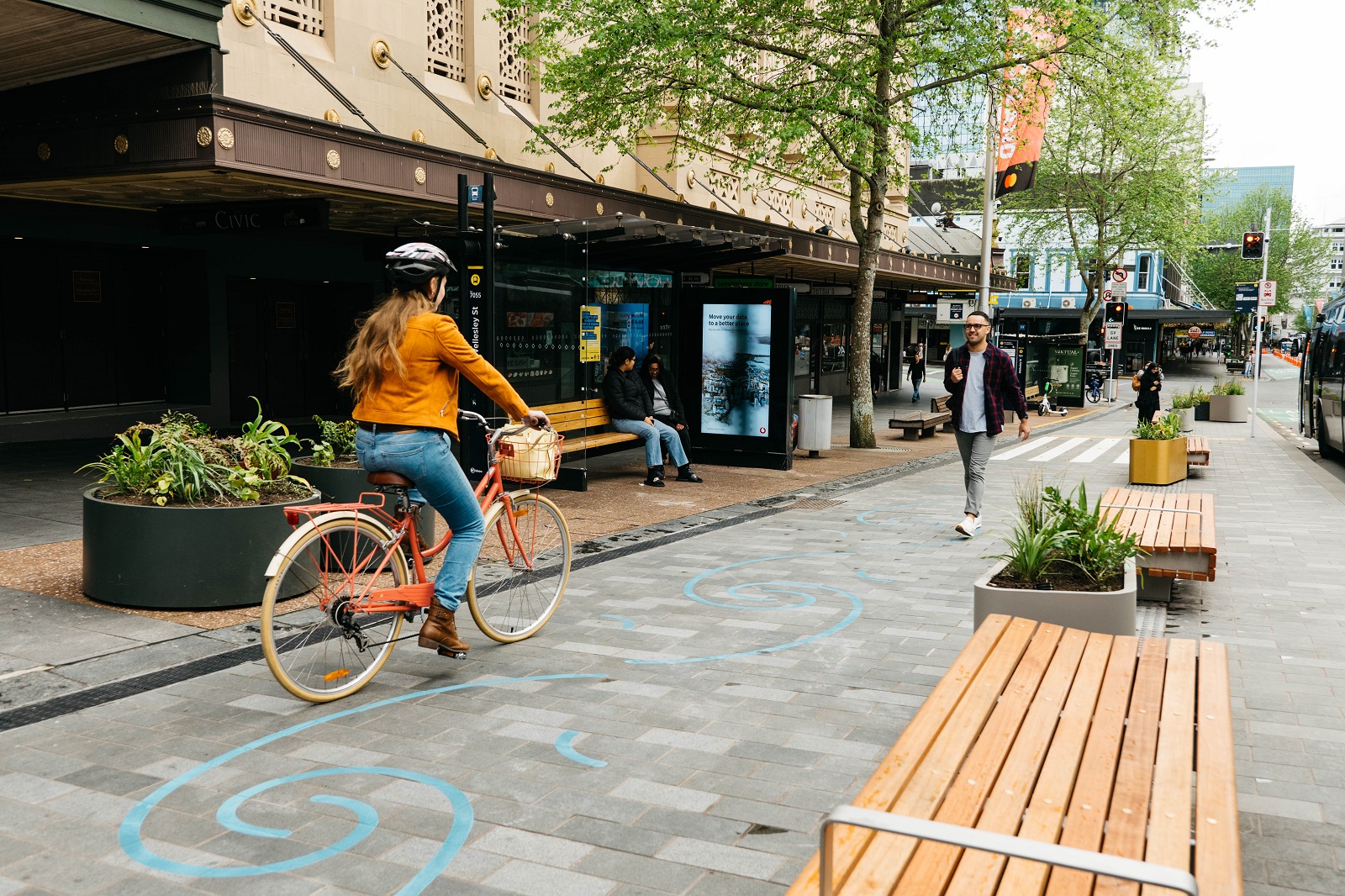We’re getting excited about the opening of our sparkling new Queen Street – from Mayoral Drive to Shortland Street – later this month.
Here are 10 curious ‘Who knew?’ moments to help kick off some nostalgia for our glorious, and sometimes enigmatic, premier street.
Passionate about the history of Queen Street, we learn from George Farrant former Principal Heritage Advisor at Auckland Council who takes us back more than 100,000 years; we see how Aucklanders are walking the footsteps of centuries past with contemporary art honouring Māori who first inhabited the Waihorotiu (Queen Street) valley; we are inspired by one of the street’s founding entrepreneurs; we smile at some lighter touches from Jack Leigh who wrote ‘The Queen of Streets’ for New Zealand Geographic; we reflect on a riot; and we share some recent milestones as we count down to the November reveal of an upgraded Queen Street.
1. An ice age and a volcano
A pocket ‘natural history’ of Queen Street from George Farrant: Originally, a small stream flowed from the area which is now Aotea Square into the Waitematā River. After the last ice age, when the ice had melted, the sea rose and the river became Waitematā Harbour as it is today. Then, between 200,000 and 100,000 years ago, the area’s earliest and smallest volcanic vent erupted between Freyberg Place and Victoria Street carpark and a thick lobe of basalt lava flowed down into the Waihorotiu valley, damming the stream and creating a lake – later a swamp. The Waihorotiu stream flowed from the swamp at Victoria Street, probably as a waterfall over the basalt dam, then continued to the harbour. The shoreline at that time was at Shortland Street.

2. An ‘ancient awa’
“An ancient awa / river rests beneath the asphalt that has carried everything from horse and carriage to the public bus and Tesla car. It’s called Waihorotiu Stream. Near the banks of the water lay a settlement named Ngā Wharau a Tako, which used the banks of the awa for agriculture alongside hunting, fishing and gathering. The site sat on what is now Albert, Kingston and Federal Streets.” Read the full story on stuff by Karanama Ruru.

3. Visionary behind retail icon Smith & Caughey’s
Born in Ireland in 1851, Marianne Caughey married William Henry Smith, a draper in 1874. The young couple lived in Belfast and New York, before William suffered ill health and the couple made the decision to set sail to New Zealand – a 104-day voyage. Marianne opened her first shop in upper Queen Street, calling it ‘Smith’s Cheap Drapery Warehouse.’ She went on to craft the beginnings of retail legend Smith & Caughey’s, an iconic store which has been thriving in Queen Street for more than 140 years. Read more about one of Queen Street’s founding entrepreneurs here.
4. NZ’s first asphalt street, 120 years ago
Queen Street became the country’s first asphalt street in 1902. The horses tended to slip, but people had cleaner shoes. The finished surface was melted smooth with shovel-like implements heated in fiery braziers. The same year, the first electric trams were seen in Queen Street, with Sir John Logan Campbell driving the leading car through the crowds. From ‘The Queen of Streets’, by Jack Leigh, for New Zealand Geographic. For the story click here.
5. Queen Street’s 'magic carpet ride'
Inside the Civic, the velvet–blue starred ceiling replicates the Southern Sky. Everything else inside the four walls is as far removed from the Southern Hemisphere as it possibly could be. With its minarets, Hindu gods, monkeys, elephants and red-eyed panthers, the theatre’s wonderful interior is as close to taking a magic carpet ride as a human could wish. At the end of each “talkie” movie an orchestral barge would rise out of the pit, and dancing would begin on the dance floor below. Watching from the circle, my grandmother, a practical woman, would worry about her chances of getting drenched under the open sky. From ‘The Queen of Streets’, by Jack Leigh, for New Zealand Geographic
6. ‘Are the kids all right?’
‘Tears, terror at the concert that made history’ was one of the headlines the day after the Queen Street riot of December 1984. It made for heady reading over the morning cornflakes as papers described screaming children, bloody head wounds and police facing ‘gun-toting’ rioters. The ‘Thank God, it’s over’ concert took place on 7 December 1984 at Auckland’s Aotea Centre. Promoted as a summer celebration of the end of the academic year, this free event featured top local bands Herbs, DD Smash and The Mockers. Shortly after DD Smash took the stage, the power went off prompting some of the 10,000-strong audience to throw bottles at police. There were a few arrests and extra police arrived in riot gear. The New Zealand History website describes the Queen Street riots of 1984 here.

Te Wānanga
7. Seawall strengthened for next 100 years
Since the 1800s the southern shore of the Waitematā Harbour has been an important hub for transport, trade and commerce. In 2021 the seismic strengthening of Quay Street’s historic seawall was completed, securing Auckland’s waterfront for the next 100 years. The work enabled a revitalised waterfront and a new civic square, Te Komititanga, where Queen Street meets the sea. Learn about the paving pattern at Te Komititanga here.
8. CPO unveiled again
Auckland’s much-loved Chief Post Office (CPO) first graced the northern end of Queen Street 110 years ago. In 2021, after an astonishing feat of engineering and meticulous restoration this Category 1 listed historic building reopened as the new main entrance to the Britomart Transport Centre. The facade was then restored and opened by Auckland Transport in 2022. Before you head down to see the CPO, learn about its earlier life here.

9. Tūrama illuminates Waihorotiu valley
Aucklanders celebrated New Zealand’s first-ever Matariki public holiday with Tūrama, a spectacle brought to Queen Street by Auckland Council, Heart of the City and Ngāti Whātua Ōrākei in mid-winter 2022. Birds / manu flew overhead, ripples of light danced underfoot and Horotiu, an enduring influence in the Waihorotiu valley, made an entrance. This series of light installations won a bronze Best Design Award in October.
Walk with artist Graham Tipene (Ngāti Whātua Ōrākei) through Tūrama here.
10. Adding a leaf to Queen Street’s book
Fast-forward to 2022 and the plants and planters are among the elements which will tell the story. You’ll see plant species which mirror the wetland heritage of upper Queen Street, broadleaf varieties reflecting the forest / ngāhere which once thrived here, and coastal plants to acknowledge the harbour. The colour palette of the planters also speaks to the area’s history. A gold planter will reflect the cultural history of the Aotea precinct, a scoria colour will reflect the mid-section’s volcanic geology, and Corten steel is a nod to the maritime character of the waterfront end of the street.
So, when you ride along the new Waihorotiu path or walk along the widened footpaths of the newly finished street, don’t forget to notice the narrative of the plants, feel the vibrancy of the new design and take cues from the markings and textural changes which will guide you.



